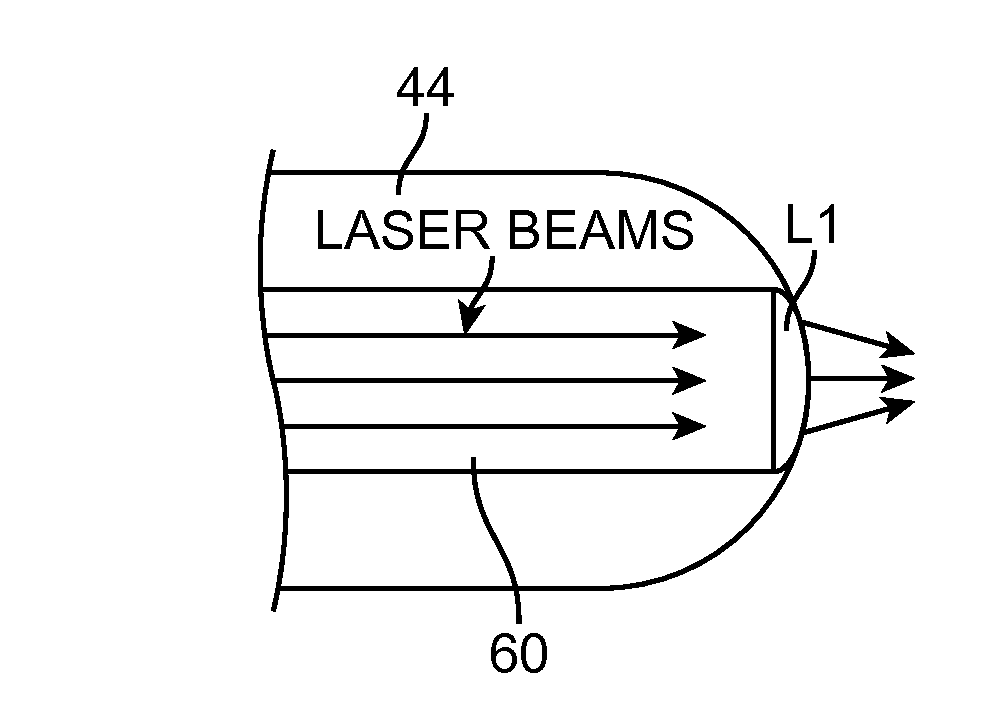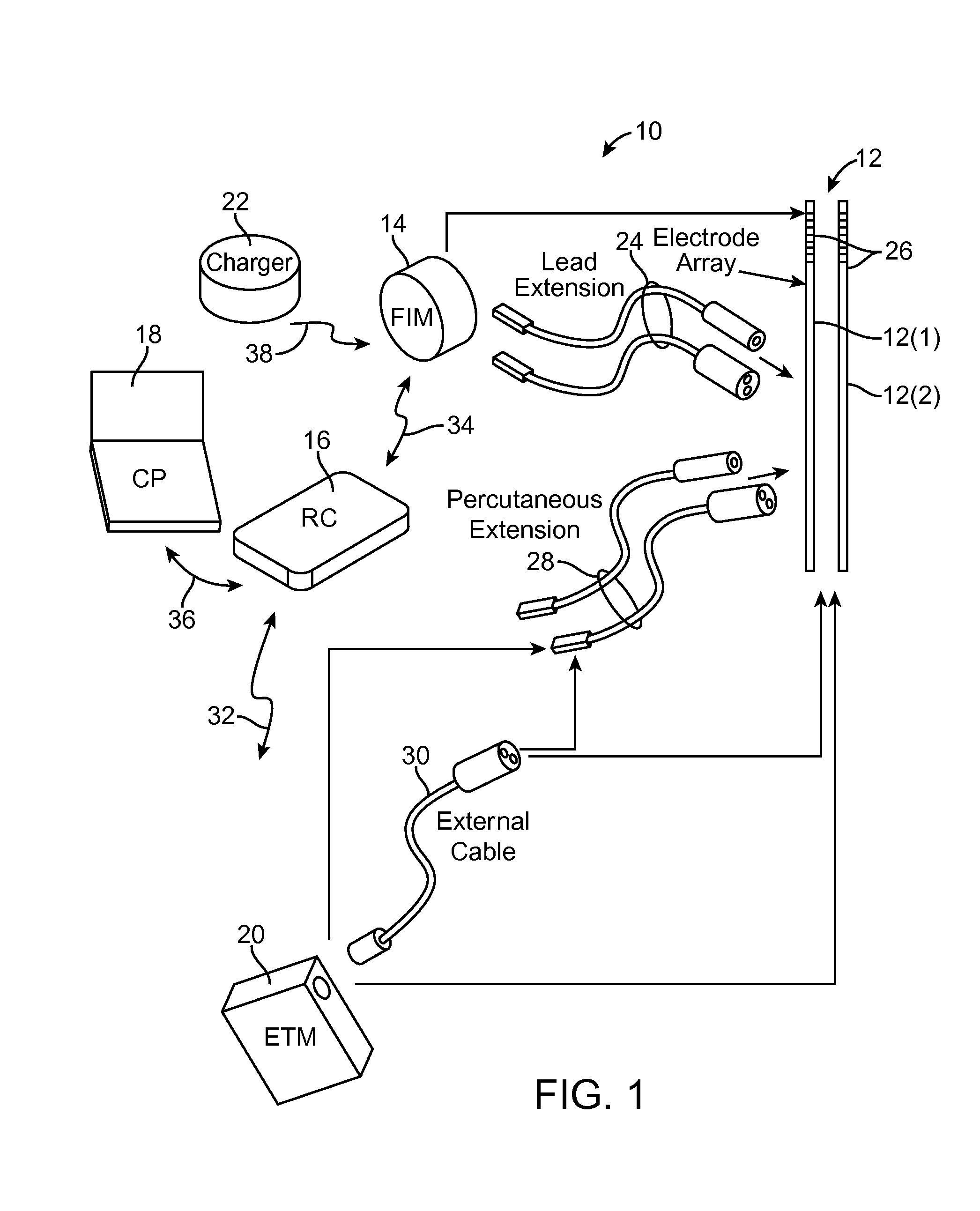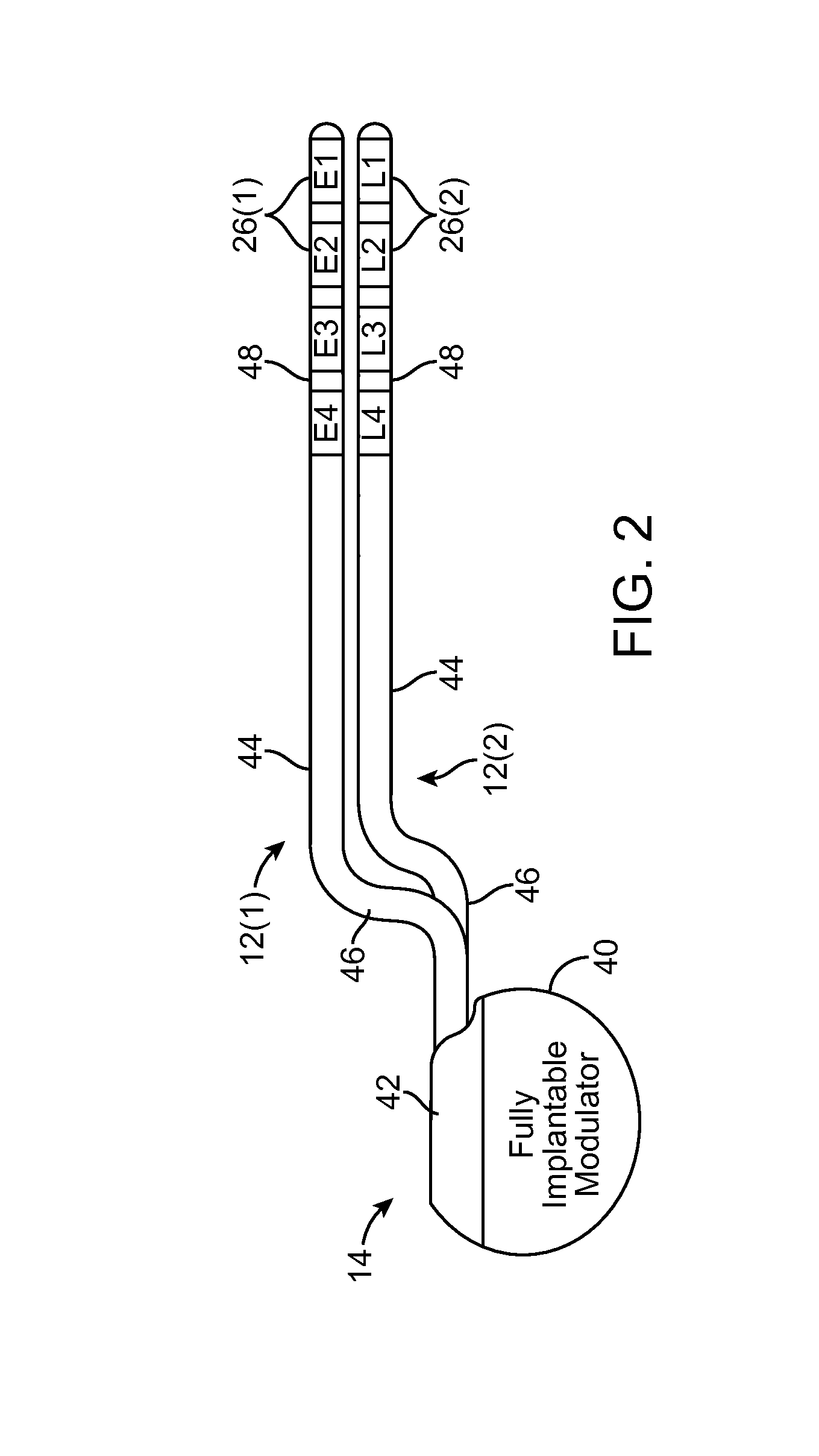Low-level laser therapy
a low-level laser and laser therapy technology, applied in the field of tissue modulation systems, can solve the problems of compromising selectivity of electric neural modulation, challenging the use of this technique in portable or implantable neuromodulation devices, etc., and achieve the effect of reducing the excitability and reducing the excitability of the first nerve fiber
- Summary
- Abstract
- Description
- Claims
- Application Information
AI Technical Summary
Benefits of technology
Problems solved by technology
Method used
Image
Examples
Embodiment Construction
[0063]Turning first to FIG. 1, an exemplary neuromodulation system 10 is used to treat any one of a variety of ailments using low-level laser energy, and in some cases, a combination of the laser energy and electrical energy to treat any of the ailments, as well as to prevent or minimize any side-effects.
[0064]The system 10 generally includes a plurality of implantable neuromodulation leads 12, a fully implantable modulator (FIM) 14, an external control device in the form of a remote controller RC 16, a clinician's programmer (CP) 18, an external trial stimulator (ETS) 20, and an external charger 22.
[0065]The FIM 14 is physically connected via one or more lead extensions 24 to the neuromodulation leads 12, which carry a plurality of neuromodulation elements 26. Although twp neuromodulation leads 12 are illustrated, it should be appreciated that less or more neuromodulation leads 12 can be provided. As will be described in further detail below, the FIM 14 includes circuitry that deli...
PUM
 Login to View More
Login to View More Abstract
Description
Claims
Application Information
 Login to View More
Login to View More - R&D
- Intellectual Property
- Life Sciences
- Materials
- Tech Scout
- Unparalleled Data Quality
- Higher Quality Content
- 60% Fewer Hallucinations
Browse by: Latest US Patents, China's latest patents, Technical Efficacy Thesaurus, Application Domain, Technology Topic, Popular Technical Reports.
© 2025 PatSnap. All rights reserved.Legal|Privacy policy|Modern Slavery Act Transparency Statement|Sitemap|About US| Contact US: help@patsnap.com



